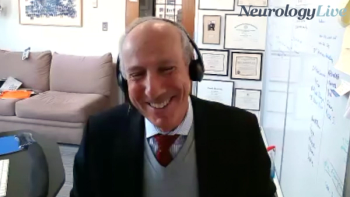
Insights on Safety and Clinical Guidance for Cannabinoid Use in Migraine: Nathaniel M. Schuster, MD
At AHS 2025, the associate clinic director at the UC San Diego talked about the cautious use of cannabinoids in migraine and the importance of standard therapies before cannabinoids. [WATCH TIME: 3 minutes]
WATCH TIME: 3 minutes
"Our goal is to help inform doctors, help inform patients. Because very often, patients are not comfortable talking about cannabinoids. Very often, they use them without telling their doctors, but it is an important discussion. I think doctors do have some information that they can glean from the study and other information that they can provide patients."
Migraine, a leading cause of disability worldwide, is typically managed with acute or preventive therapies, although most patients rely on acute medications. Alongside these traditional treatments, interest in cannabinoids for migraine is growing, as headache or migraine are among the most common reasons for patients use. Although cannabinoid-medications are FDA-approved for specific conditions, none are currently approved for migraine. In preclinical studies, findings suggest that cannabinoids may influence migraine mechanisms, and surveys and retrospective studies indicate potential benefits for both acute and preventive treatment.1
At the
In an interview at AHS 2025 with NeurologyLive®, Schuster highlighted the role of cannabinoids in migraine management, noting that patients often use them without discussing it with their health care providers. Although the presented study examined limited use over 1-year, Schuster emphasized that cannabinoids may not be a first-line therapy and that standard treatments such as triptans and gepants should be attempted first. He also discussed potential risks of frequent cannabinoid use and addressed safety considerations related to different formulations. Overall, he noted in the conversation that more research may be needed to assess long-term effectiveness and safety of cannabinoids in the migraine patient population.
REFERENCES
1. Schuster NM, Wallace MS, Marcotte TD, et al. Vaporized Cannabis versus Placebo for Acute Migraine: A Randomized Controlled Trial. Preprint. medRxiv. 2024;2024.02.16.24302843. Published 2024 Feb 18. doi:10.1101/2024.02.16.24302843
2. Schuster NM. Vaporized Cannabis Versus Placebo for the Acute Treatment of Migraine: Final Results From a Randomized, Double-Blind, Placebo-Controlled, Crossover Trial. Presented at: 2025 AHS Annual Meeting; June 19-22; Minneapolis, MN. Harold G. Wolff Lecture Award.
Newsletter
Keep your finger on the pulse of neurology—subscribe to NeurologyLive for expert interviews, new data, and breakthrough treatment updates.



































